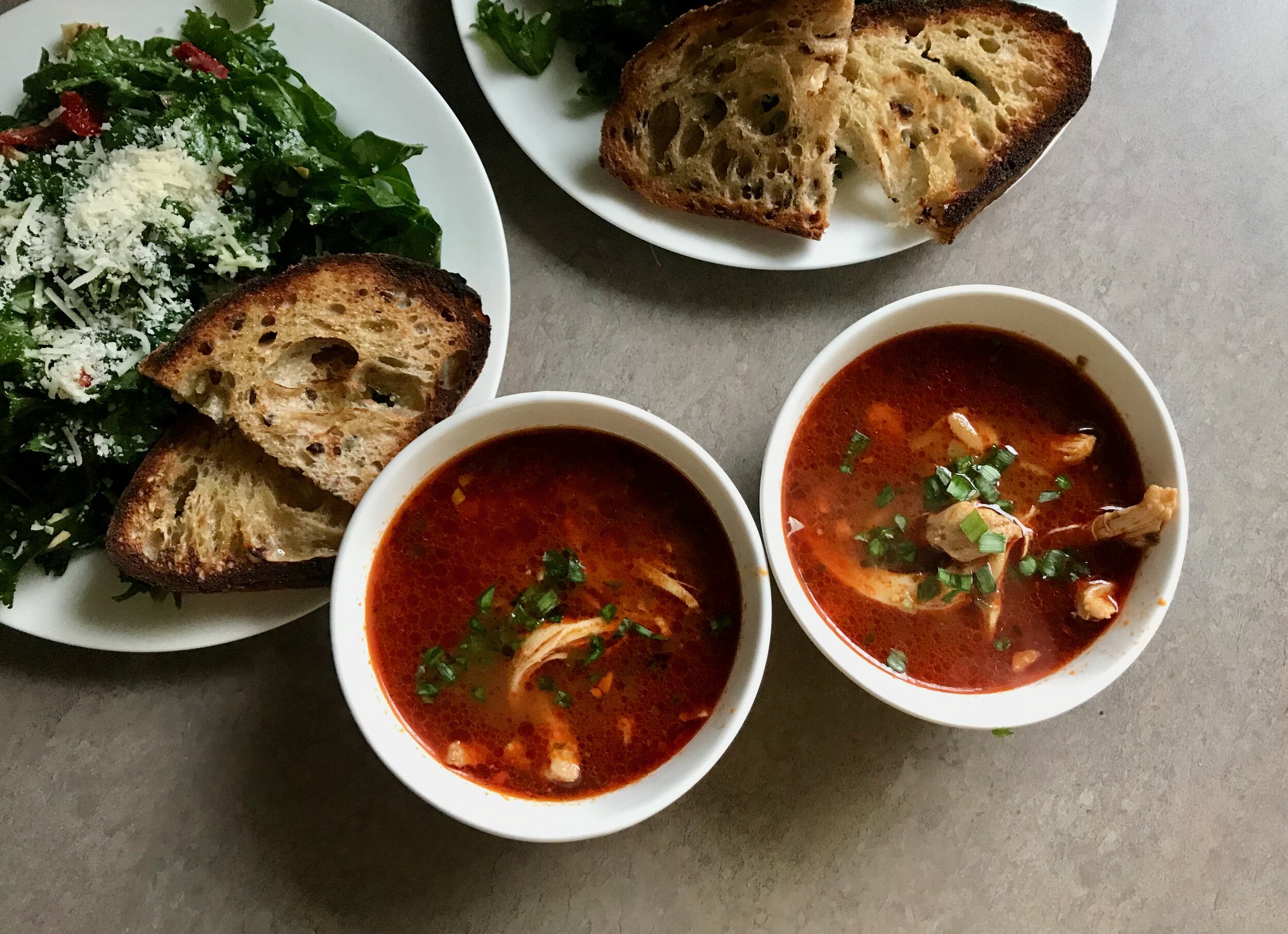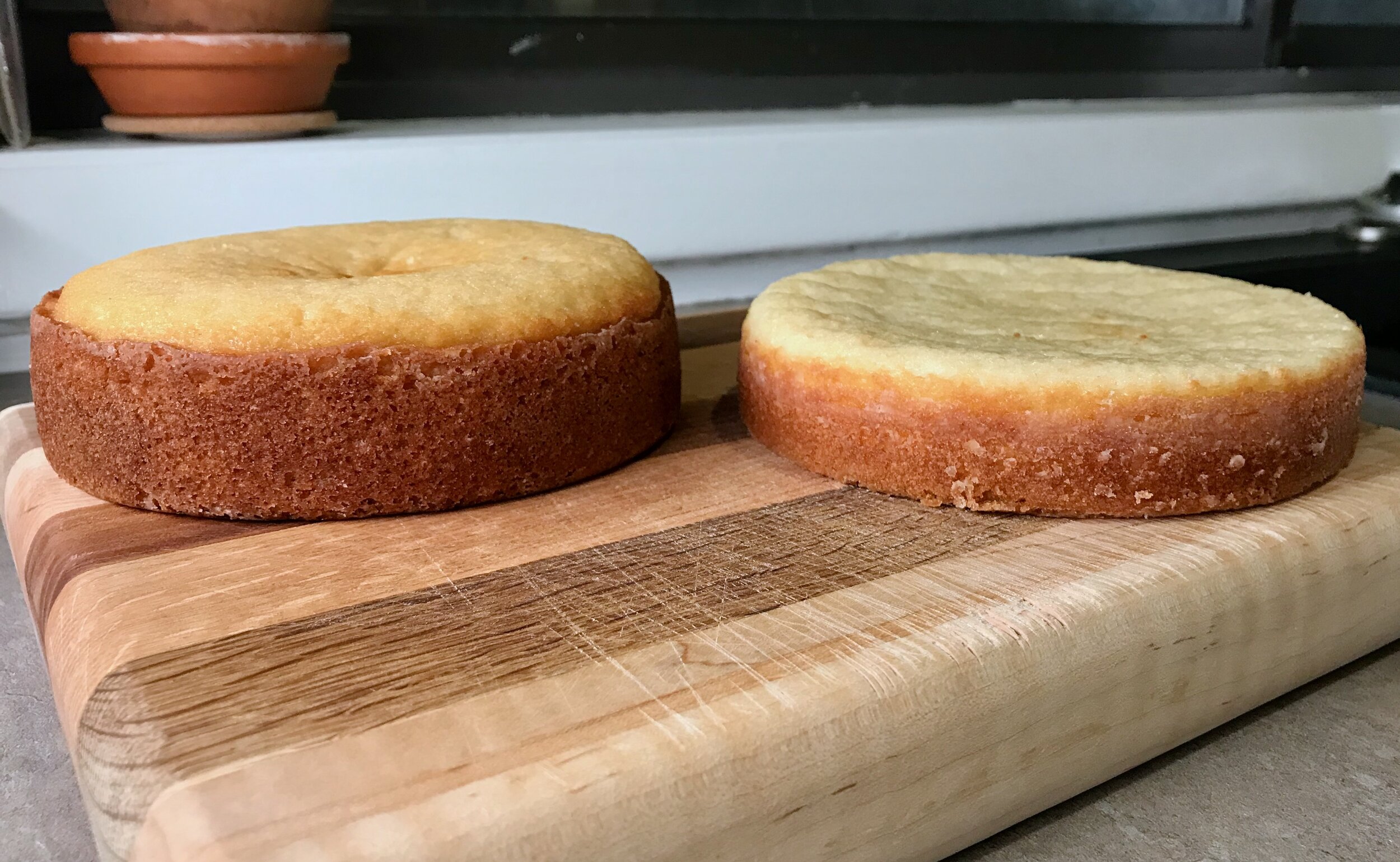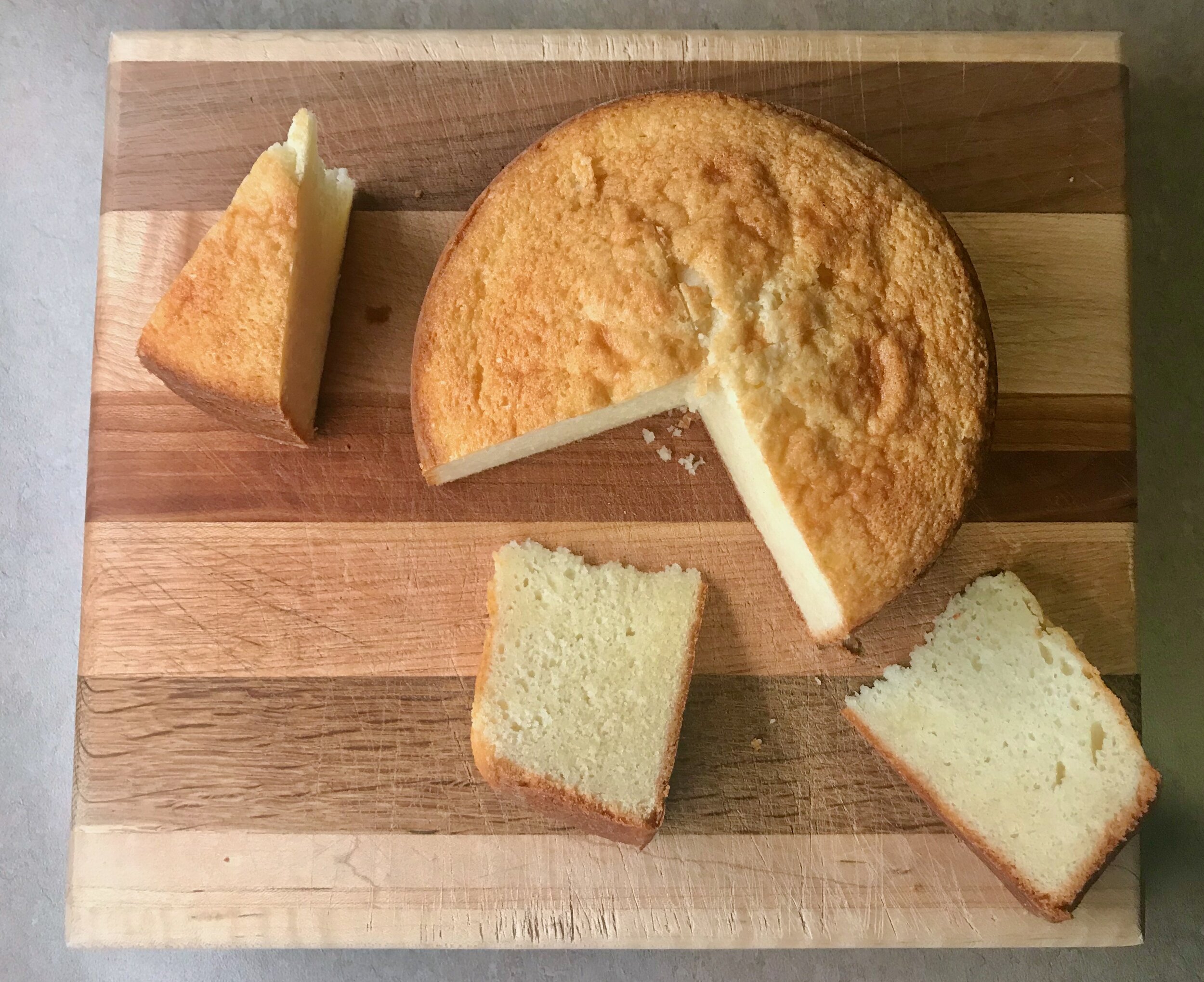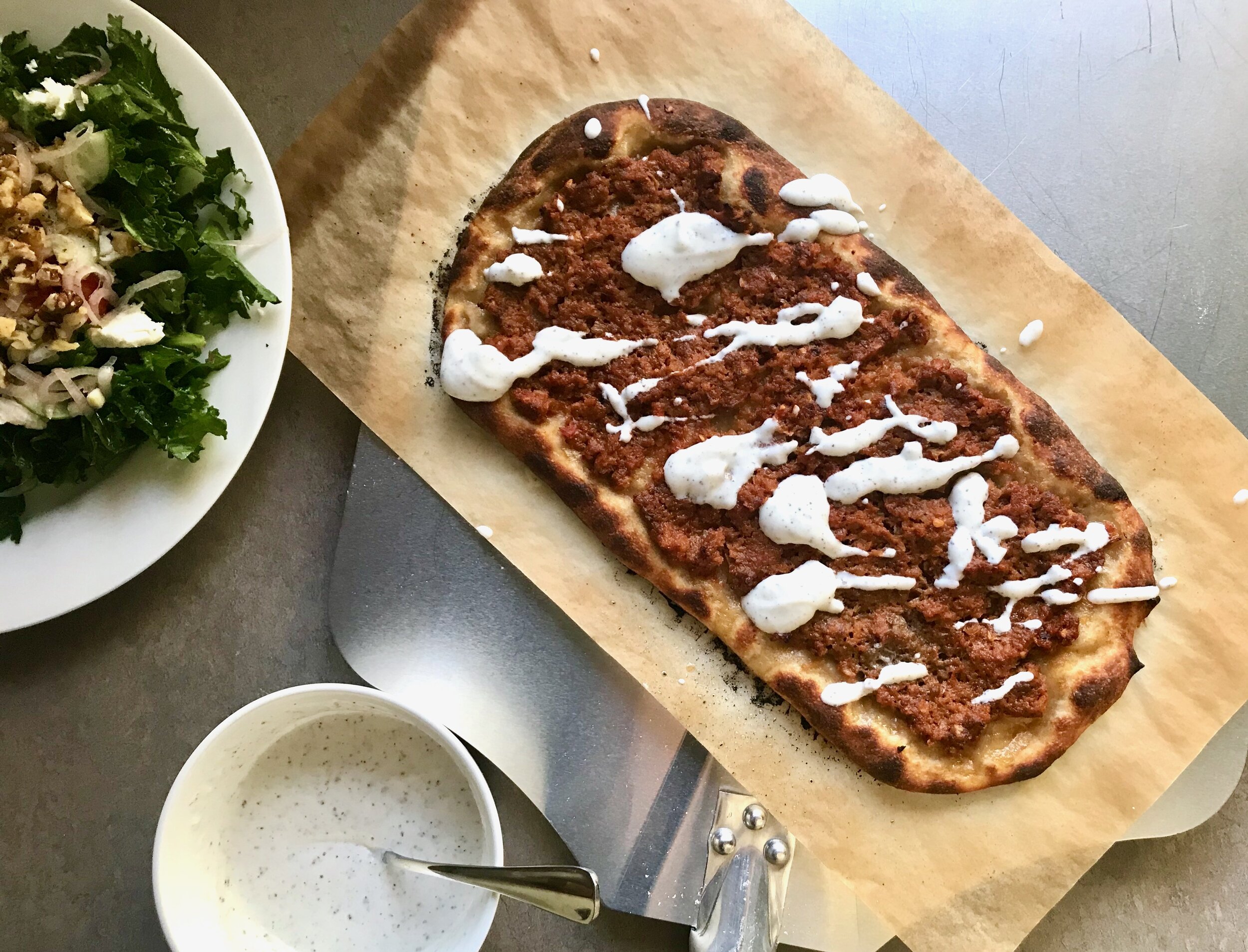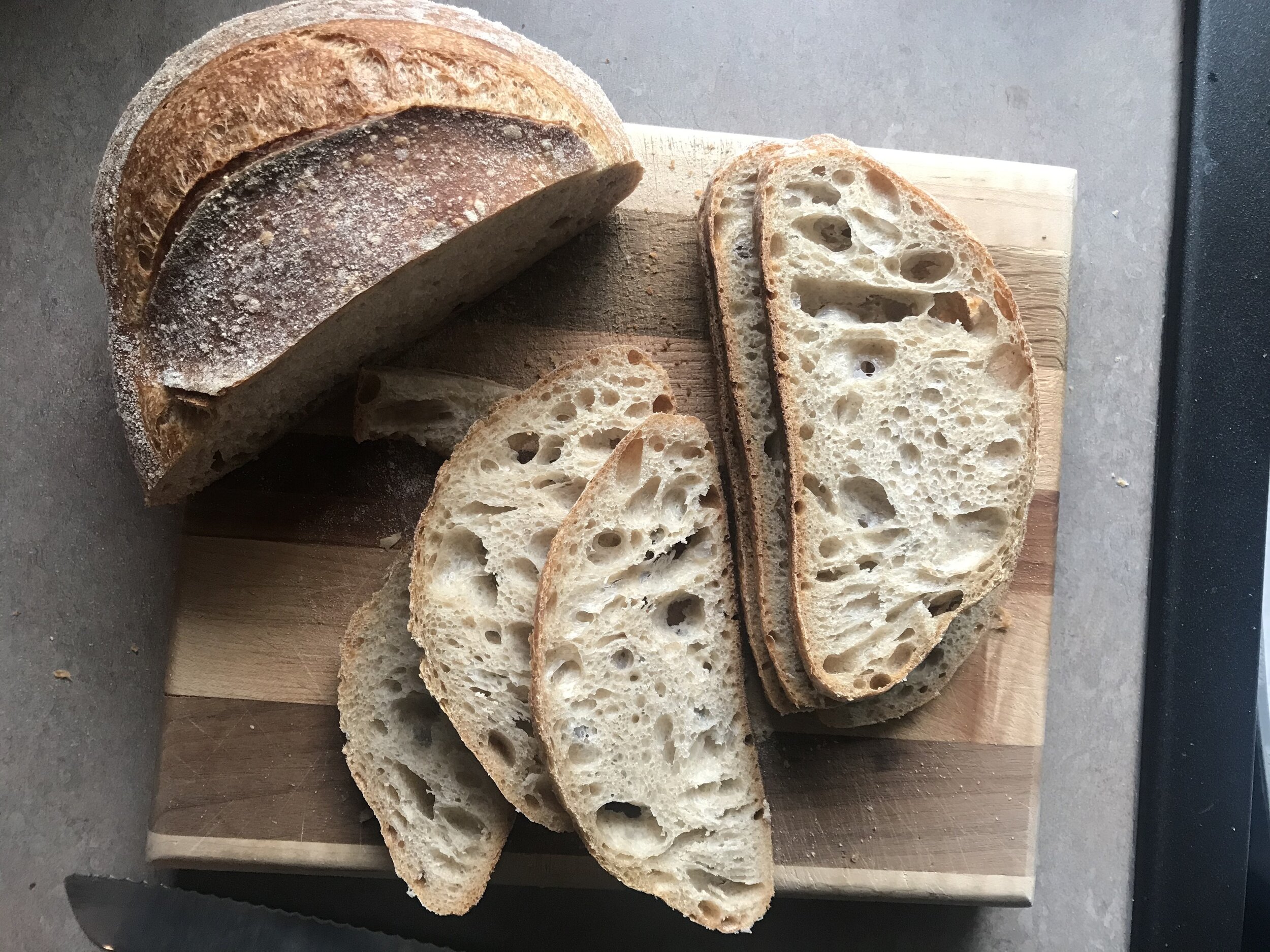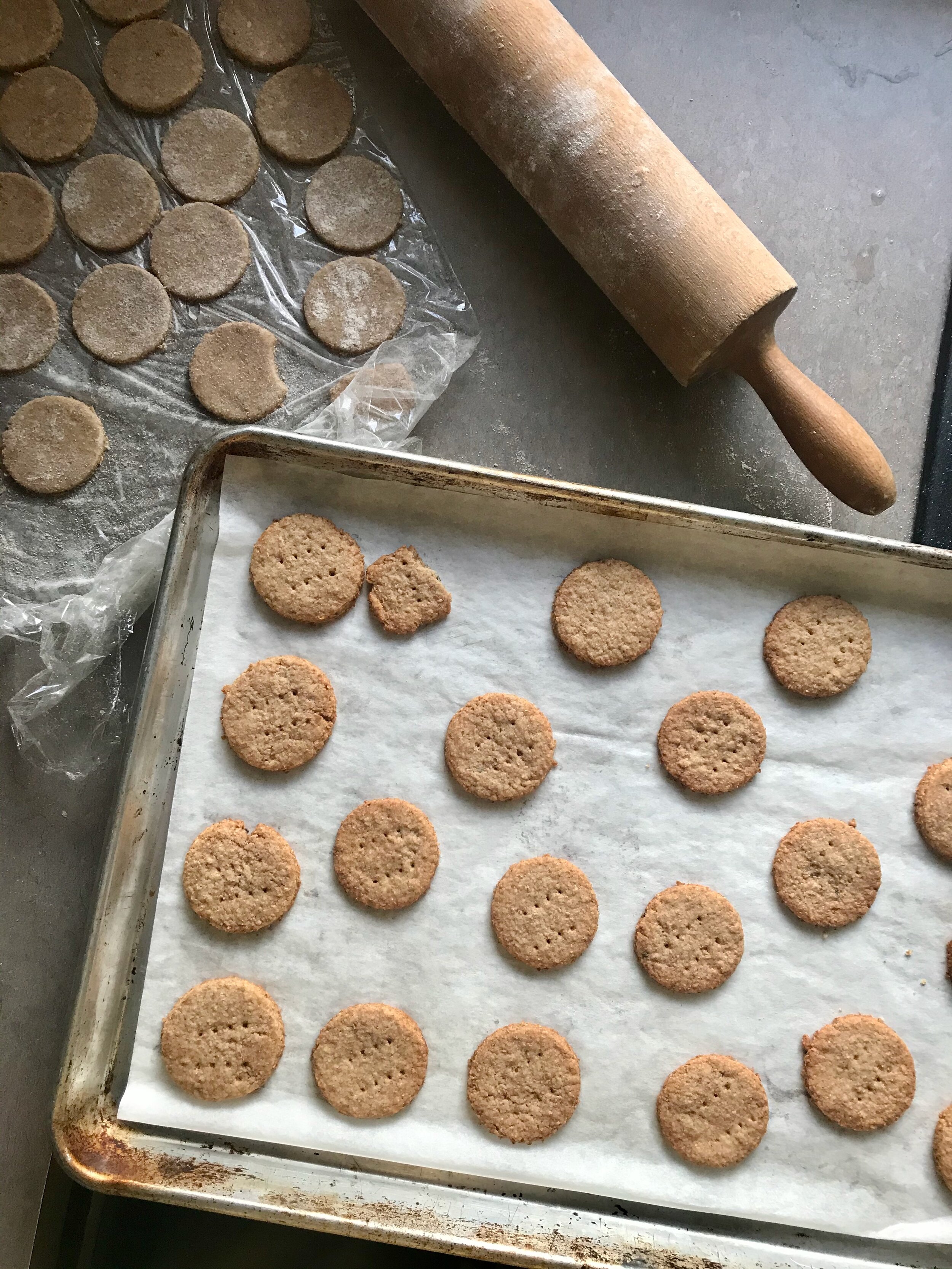This is Martha Stewart’s White Cake
Conclusion:
There was a clear winner and loser in this cake testing competition. Lara and I agreed right away. Martha Stewart was the clear favorite. The White Mountain Layer Cake was a very close second, but it was not quite as light as Martha’s cake, and not quite as rich. The Martha Stewart cake baked up beautifully with a nice tight crumb and was airy and super light, yet very rich and buttery tasting. In my opinion the perfect wedding cake base.
The White Mountain Layer Cake was fantastic, but just slightly denser in texture and mouthfeel. It is a great recipe that I am sure to make again, but it didn’t seem quite right for a wedding cake. I loved the little hint of almond from the almond extract. And while I couldn’t taste the coconut oil in this (so if you’re worried about that, don’t be), there was a slightly different flavor that was very nice.
The ATK cake was super not impressive and not really all that good to be honest. The flavor was the most uninteresting, just flat and boring, and the texture wasn’t very nice. It was kind of gummy and a bit courser than the other two cakes. All in all I didn’t care for it at all. I do have to say, as I already mentioned above, when I scaled this recipe down it did end up being the smallest volume of batter and it is possible that if I made the original recipe as written it would have turned out better. However, with two other wonderful options I don’t feel the need to test it again.
The Recipes:
Note: the original recipes are listed below with my scaled down ingredient lists in italics
Martha Stewart’s White Cake
From Martha Stewart’s Baking Handbook
Ingredients
3 cups cake flour | 1 cup, 120 grams
2 teaspoons baking powder | 2/3 teaspoon
1 teaspoon salt | 1/3 teaspoon
3 sticks butter, at room temperature | 1 stick, 8 tablespoons
2 1/4 cups sugar, divided | 3/4 cup, 150 grams
1/2 teaspoon vanilla extract | 1/4 teaspoon
1 cup milk | 1/3 cup, 2 2/3 ounces
8 large egg whites | 2 2/3 egg whites, 93 grams
Directions
Preheat the oven to 350 degrees. Butter two 9-by-2 inch round cake pans and line the bottoms with parchment paper. Dust with flour, tapping out the excess. Set aside.
In the bowl of an electric mixer fitted with the paddle attachment, beat the butter and 2 cups of sugar until light and fluffy, 3 to 4 minutes, scraping down the sides of the bowl as needed. Beat in the vanilla. With mixer on low speed, add flour mixture in three parts, alternating with the milk and beginning and ending with the flour; beat until just combined. Transfer mixture to a large bowl; set aside.
In the clean bowl of an electric mixer fitted with the whisk attachment, beat egg whites on low speed until foamy. With mixer running, gradually add remaining 1/4 cup sugar; beat on high until stiff, flossy peaks form, about 4 minutes. Do not overbeat. Gently fold a third of the egg-white mixture into the butter-flour mixture until combined. Gently fold in the remaining whites.
Divide batter evenly between prepared pans and smooth with an offset spatula. Bake, rotating pans halfway through, until cakes are golden brown and a cake tester inserted in the centers comes out with just a few moist crumbs. 30 to 35 minutes. Transfer pans to a wire rack to cool 20 minutes. Invert cakes onto rack; peel off parchment. Reinvert cakes and let them cool completely, top sides up.
———————————————————————————————————————————————————————————————
White Mountain Layer Cake
From Bravetart by Stella Parks
Ingredients
4 cups (16 oz) bleached cake flour | 4 ounces
2 sticks butter | 1/2 stick
2/3 cup (4 oz) virgin coconut oil, solid but creamy | 1 ounce
2 1/4 cups (16 oz) sugar | 4 ounces
2 1/2 teaspoons baking powder | 5/8 teaspoon
1 teaspoon baking soda | 1/4 teaspoon
3/4 teaspoon Diamond Crystal kosher salt (half as much if iodized) | 3/16 teaspoon
1 cup (8 1/2 oz) egg whites, from about 8 eggs | 2 1/8 ounces
2 tablespoons vanilla extract | 1 1/2 teaspoons
1 teaspoon almond extract | 1/4 teaspoon
2 cups (16 oz) cultured low-fat buttermilk | 1/2 cup (4 ounces)
Directions
Preheat oven to 325 degrees F. Line three 8-by-3-inch aluminum cake pans with parchment and grease with pan spray.
Combine butter, coconut oil, sugar, baking powder, baking soda and salt in the bowl of a stand mixer fitted with the paddle attachment. Mix on low speed to moisten, then increase to medium and cream until fluffy and light, about 5 minutes, pausing to scrap the bowl and beater halfway through. With the mixer running, add the egg white one at a time, follow by vanilla and almond extracts.
Reduce speed to low and sprinkle in one-third of the flour, followed by one-third of the buttermilk. Alternate between the two, allowing each addition to be roughly incorporated before adding the next. Once smooth, fold with a flexible spatula to ensure it’s well mixed from the bottom up. Divide among the prepared caked pans, about 22 ounces each.
Bake until the cakes are firm but pale, browned only around the very edges, about 40 minutes (My small cake took about 35.5 minutes at 350 degrees —> I did accidentally bake at the incorrect temperature but it didn’t seem to do any harm!). A toothpick inserted into the center will emerge with a few crumbs still attached, and your fingertip will leave a slight indentation in the puffy crust.
Cool until no trace of warmth remains, about 90 minutes. Loosen the cakes from their pans with a knife. Invert onto a wire rack, peel off the parchment, and re-invert.
———————————————————————————————————————————————————————————————
Classic White Layer Cake
From The Perfect Cake by America’s Test Kitchen
Ingredients
1 cup whole milk | 1/4 cup
6 large egg whites | 1.5 egg whites
1 teaspoon vanilla extract | 1/4 teaspoon
2 1/4 cups (9 ounces) cake flour | 2.25 ounces
1 3/4 cups (12 1/4 ounces) sugar | 3 ounces
4 teaspoons baking powder | 1 teaspoon
1 teaspoon salt | 1/4 teaspoon
12 tablespoons butter, cut into 12 pieces and softened | 3 tablespoons
Directions
Adjust oven rack to middle position and heat oven to 350 degrees. Grease two 9-inch round cake pans, line with parchment paper, grease parchment, and flour pans. Whisk milk, egg whites, and vanilla together in a bowl.
Using stand mixer fitted with paddle, mix flour, sugar, baking powder, and salt on low speed until combined. Add butter, 1 piece at a time, and mix until only pea-size pieces remain, about 1 minute. Add all but 1/2 cup milk mixture, increase speed to medium-high, and beat until light and fluffy, about 1 minute. Reduce speed to medium-low, add remaining 1/2 cup milk mixture, and beat until incorporated, about 30 seconds. Give batter a final stir by hand.
Divide batter evenly between prepared pans and smooth tops with a rubber spatula. Gently tap pans on counter to settle batter. Bake until toothpick inserted in center comes out with few crumbs attached, 23 to 25 minutes, switching and rotating pans halfway through baking. Let cakes cool in pans on wire rack for 10 minutes. Remove cakes from pans, discarding parchment, and let cool completely on rack, about 2 hours.

